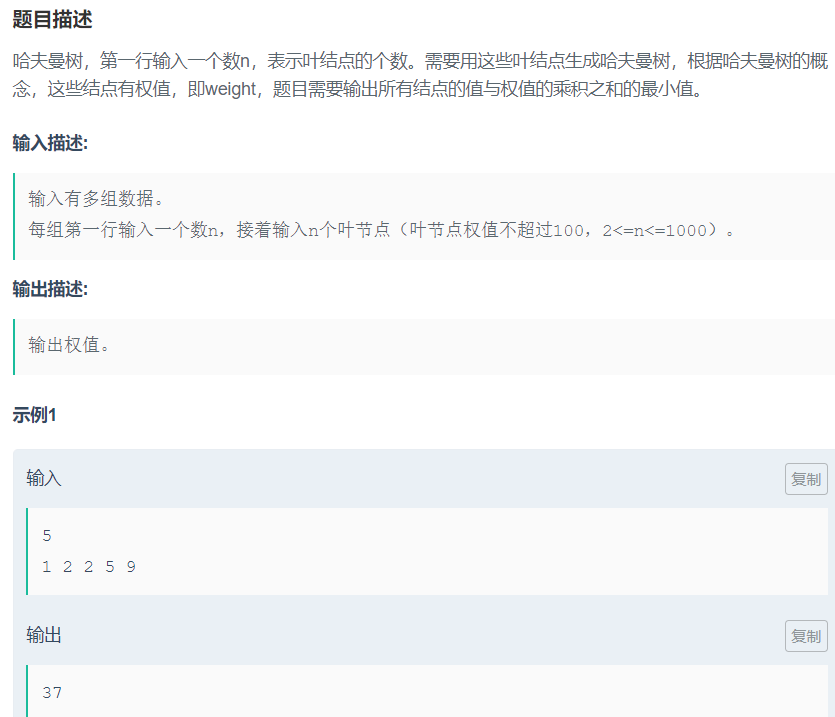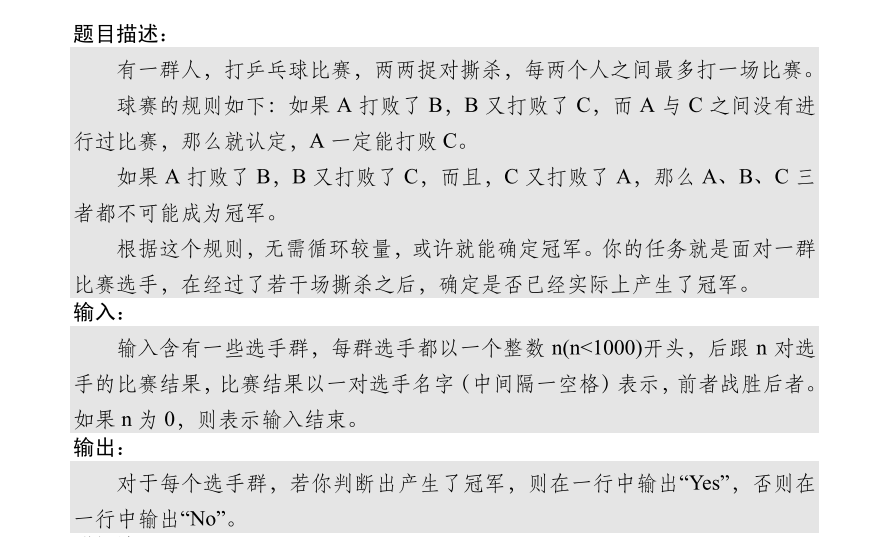本篇旨在记载STL一些常见函数及用法以备记忆
栈容器 stack
用法:
- empty() 堆栈为空则返回真
- pop() 移除栈顶元素
- push() 在栈顶增加元素
- size() 返回栈中元素数目
- top() 返回栈顶元素
初始化: stack<int> s
示例:简单计算器
1
2
3
4
5
6
7
8
9
10
11
12
13
14
15
16
17
18
19
20
21
22
23
24
25
26
27
28
29
30
31
32
33
34
35
36
37
38
39
40
41
42
43
44
45
46
47
48
49
50
51
52
53
54
55
56
57
58
59
60
61
62
63
64
65
66
67
68
69
70
71
72
73
74
75
76
77
78
79
80
81
82
83
84
85
86
87
88
89
90
91
92
93
94
95
96
| #include <iostream>
#include <string>
#include <stack>
#include <algorithm>
using namespace std;
stack<char> op;
stack<float> num;
float cal(float num1, float num2, char op)
{
if (op == '+')
return num1 + num2;
else if (op == '-')
return num2 - num1;
else if (op == '*')
return num2 * num1;
else if (op == '/')
return num2 / num1;
}
int main()
{
string s;
while (cin >> s && s != "0")
{
for (float i = 0; i < s.length(); i++)
{
if (s[i] == '+' || s[i] == '-')
{
while (!op.empty())
{
char tmpop = op.top();
op.pop();
float num1 = num.top();
num.pop();
float num2 = num.top();
num.pop();
float calnum = cal(num1, num2, tmpop);
num.push(calnum);
}
op.push(s[i]);
}
else if (s[i] == '*' || s[i] == '/')
{
if (!op.empty())
{
while (op.top() != '+' && op.top() != '-')
{
char tmpop = op.top();
op.pop();
float num1 = num.top();
num.pop();
float num2 = num.top();
num.pop();
float calnum = cal(num1, num2, tmpop);
num.push(calnum);
}
}
op.push(s[i]);
}
else
{
float sum = 0;
while (s[i] != '+' && s[i] != '-' && s[i] != '*' && s[i] != '/' && i < s.length())
{
sum = sum * 10 + (s[i] - '0');
i++;
}
i--;
num.push(sum);
}
}
while (!op.empty())
{
char tmpop = op.top();
op.pop();
float num1 = num.top(); cout<<"num1="<<num1<<endl;
num.pop();
float num2 = num.top(); cout<<"num2="<<num2<<endl;
num.pop();
float calnum = cal(num1, num2, tmpop);
num.push(calnum);
}
printf("%.2f\n",num.top());
}
}
|
优先队列-实现堆 (应用:哈夫曼树)
使用之前的预处理:
include<queue>
利用语句:priority_queue<int> Q; 建立一个保存元素为int的堆Q,默认为大根堆
利用语句:priority_queue<int,vector<int>,greater<int> > Q; 定义小根堆
关于堆的操作如下:
Q.push(x); 将元素x放入堆Q中
Q.top(); 取出堆顶元素
Q.pop(); 弹出堆顶元素,取出后堆会自动调整为一个新的小顶堆
例:

1
2
3
4
5
6
7
8
9
10
11
12
13
14
15
16
17
18
19
20
21
22
23
24
25
26
27
28
29
30
31
32
| #include <iostream>
#include <queue>
using namespace std;
int main()
{
priority_queue<int, vector<int>, greater<int> > Q;
int n;
while (cin >> n)
{
while (!Q.empty())
Q.pop();
int a;
for (int i = 0; i < n; i++)
{
cin >> a;
Q.push(a);
}
int ans=0;
while(Q.size() >1)
{
int a1=Q.top();
Q.pop();
int a2=Q.top();
Q.pop();
ans+=a1+a2;
Q.push(a1+a2);
}
cout<<ans<<endl;
}
return 0;
}
|
map
1
2
3
4
5
| map<string,int> M;//定义一个完成从string到int映射的map
M.clear();//清空一个map
M.find(b);//确定map中是否保存string对象b的映射,若没有函数返回M.end()
M[b]=idx;//若map中不存在string对象b的映射,则定义其映射为b映射为idx
idxb=M[b];//若map中存在string对象b的映射,则读出该映射
|

样例输入
1
2
3
4
5
| 3
Alice Bob Smith John Alice Smith
5
a c c d d e b e a d
0
|
样例输出
代码
1
2
3
4
5
6
7
8
9
10
11
12
13
14
15
16
17
18
19
20
21
22
23
24
25
26
27
28
29
30
31
32
33
34
35
36
37
38
39
40
41
42
43
44
45
| #include <iostream>
#include <map>
#include <string>
using namespace std;
map<string, int> arr;
int in[2002];
int main()
{
int n;
while (cin >> n && n)
{
for (int i = 0; i < 2 * n; i++)
in[i] = 0;
string a, b;
arr.clear();
int idx=0;
while (n--)
{
cin >> a >> b;
int idxa,idxb;
if (arr.find(a) == arr.end())
{
idxa=idx;
arr[a]=idx++;
}
else idxa=arr[a];
if(arr.find(b)==arr.end())
{
idxb=idx;
arr[b]=idx++;
}
else idxb=arr[b];
in[idxb]++;
}
int cnt=0;
for(int i=0;i<idx;i++)
{
if(in[i]==0)
cnt++;
}
if(cnt==1) cout<<"Yes"<<endl;
else cout<<"No"<<endl;
}
}
|

